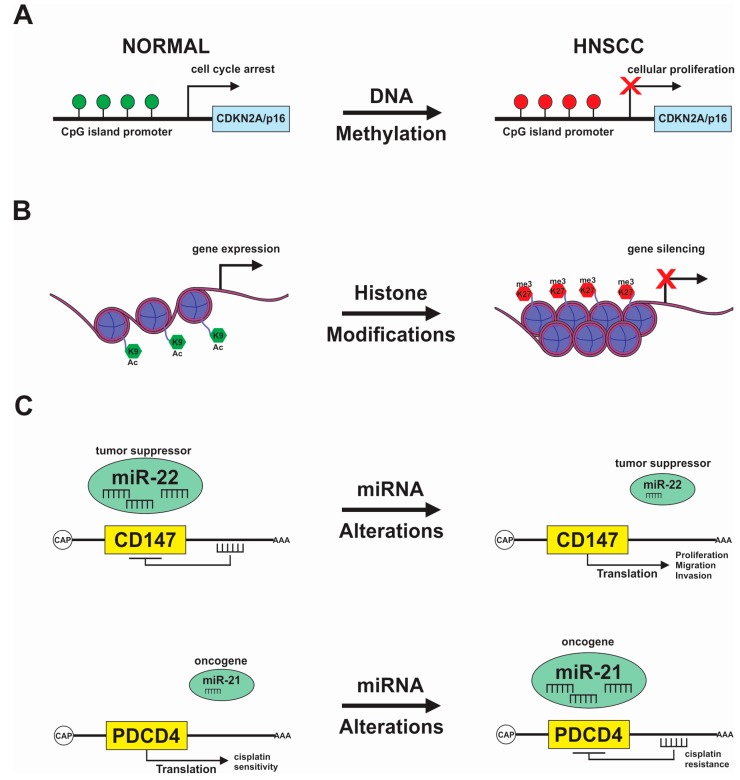Figure 2.
Overview of epigenetic alterations involved in the HNSCC progression and resistance to therapy. (A) DNA hypermethylation of the tumor suppressor CDKN2A/p16INK4a is the most frequent epigenetic modification observed in HNSCC, leading to cellular proliferation; (B) Changes in the chromatin structure lead to histone deacetylation and methylation of lysine in the histone tails resulting in gene silencing; (C) MicroRNAs work as a tumor suppressor and oncogenes regulate genes involved in HNSCC tumorigenesis. miR-22 acts as a tumor suppressor, controlling the levels of CD147 and it is frequently downregulated in HNSCC, increasing processes like proliferation, migration, and invasion (upper image). miR-21 is accumulated in HNSCC, showing oncogenic characteristics by targeting PDCD4 gene increasing resistance to cisplatin treatment (lower image).

